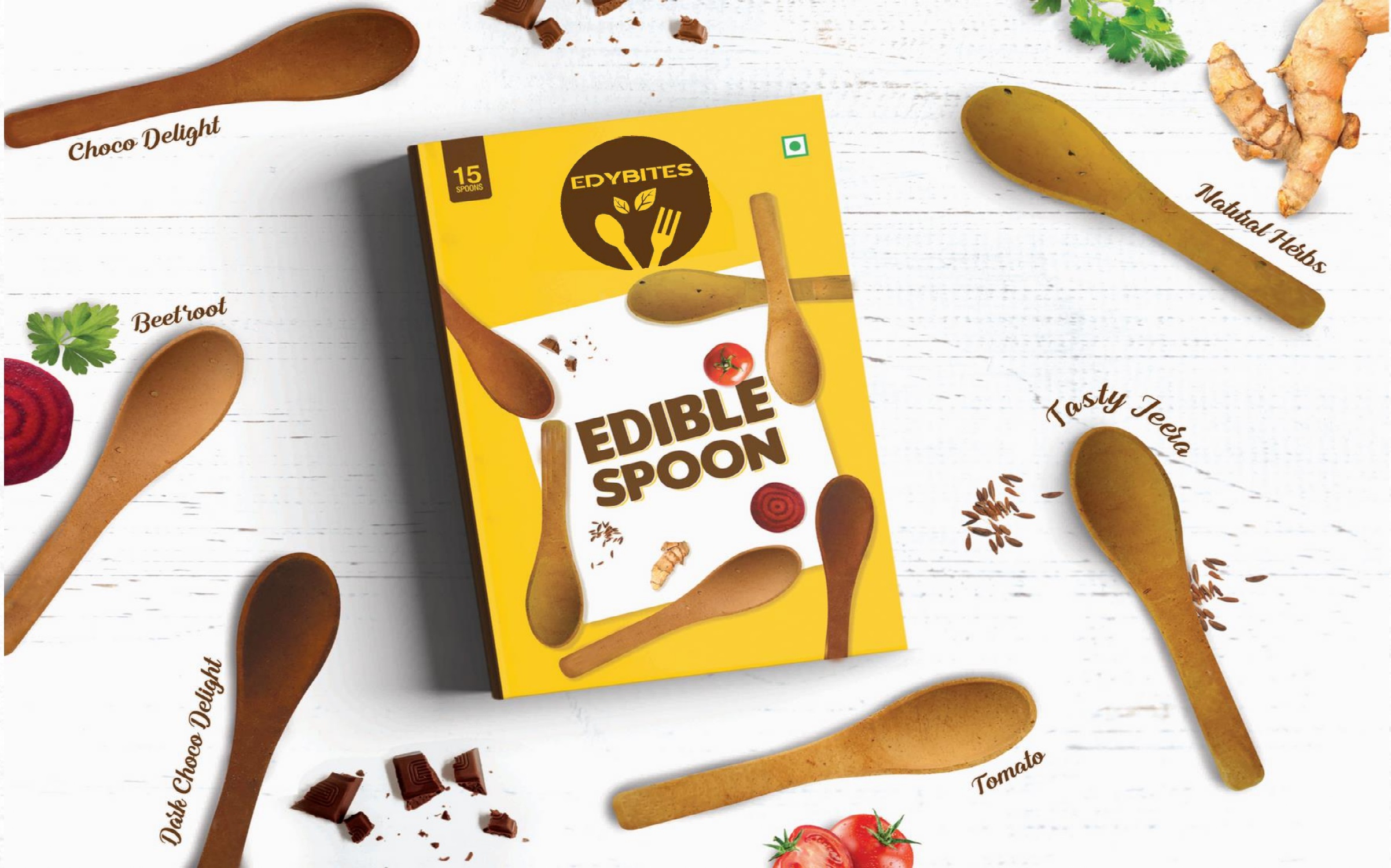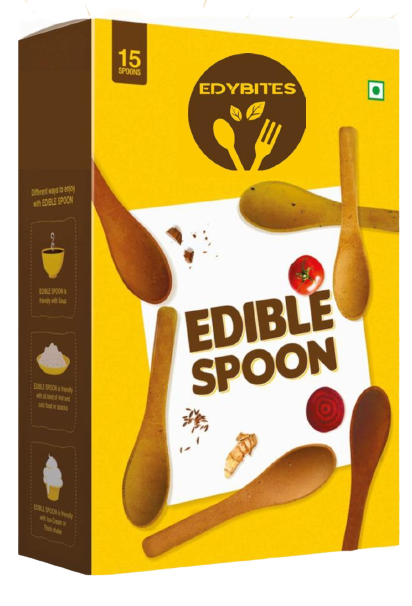
Why edible cutlery could be good for you?
USP
Plastic cutlery finds higher market only due to its very low price. After relentless efforts and working on different mechanisms to produce these at commercial scales, we were able to develop a customised proprietary technology which can produce edible cutlery that is cost-comparable with plastic cutlery. A strong and dynamic food processing sector plays a vital role in reduction in the wastage of perishable agricultural produce, enhancing shelf life of food products, ensuring value addition to agricultural produce, diversification &commercialization of agriculture, generation of employment, and enhancing income of farmers. Our Company processing offers important benefits to businesses and consumers.
The penetration of plastic waste has become so rampant that the sad fate of countless birds, animals, and marine beings after mistakenly ingesting plastic for food, might soon befall us, albeit in a different manner.
One need not watch Sir David Attenborough’s Planet Earth II or read the recent issue of National Geographic magazine to comprehend the detrimental consequences of single-use plastics over the environment and how our collective indifference is only worsening the crisis. The evidence is right in front of us—from streets and parks to forests and oceans. Plastic cutlery is one of the most common single-use plastics that is casually discarded and usually ends up in landfills or worse, water bodies. However, alternatives like metal and biodegradable cutlery are slowing coming to the fore, with individuals and organisations vehemently promoting these products to reduce the damage we have caused to the environment. The recent innovation of edible cutlery—which can be consumed after finishing one’s meal—has come as a relief to many of us.
Blending different flours, Indian natural spices, and flavours, this mixture is baked at a very high temperature to absorb moisture.
The finished products are not only 100 percent natural with no added preservatives or artificial flavouring, but the spoons also have a shelf life of six months from the date of manufacturing. The start-up even gives one the opportunity of customising the spoons as per the size, shape, and taste. The cost of a single spoon ranges from ₹6 to ₹9, depending on quantity and flavour. While a plain-flavoured spoon is priced at ₹6 per piece with an order quantity of over 5,000 pieces, a chocolate spoon is sold at ₹5 per piece.
There are no readily available statistics on the volumes of plastic disposables sold in the market. The guess estimates puts this numbers at about 280 billion pieces. This is arrived at random sampling of different users of plastic disposables over 12 countries. It was estimated that the per capita consumption of these disposables were about 100 pieces per annum (365 days). Given the sharp contrast in purchasing power, we assumed that the global average would be about a third of this number, which is 30 pieces. For the 7 billion global population, we estimate the total consumption would be about 210 billion pieces. Since edible cutlery is a relatively new concept, we expect the initial market would be 1% of this, which is 0.3 pieces per capita per annum. This itself would translate into a market of 2.1 billion pieces.







